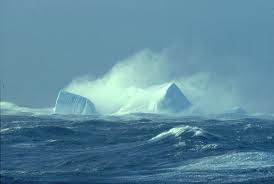

Scientists from JPL and NASA tell us that, “thickness of Arctic sea ice plays a critical role in Earth’s climate and ocean circulation. An accurate measurement of this parameter on synoptic scales at regular intervals would enable characterization of this important component for the understanding of ocean circulation and the global heat balance.”
CryoSAT, an ice measuring satellite was launched for the purpose of monitoring ice. Its Synthetic Aperture Interferometric Radar Altimeter (SIRAL) sensor is capable of measuring freeboard ice.
Last week Spot 4 images were analyzed by ScanEx, a Russia remote sensing company, for the purpose of monitoring and identifying sea ice in the western Pacific Ocean. The Australian Government monitors sea ice levels in the Antarctic as well. Japan expects to launch a new satellite in fall 2012 that will measure sea ice levels. While Arctic ice levels have decreased rapidly over time, Antarctic ice levels appear to have remained stable. Some have speculated that the Antarctic ice levels are increasing.
Today, satellites are monitoring ice pack heights daily and providing up-to-date information. It is anticipated that these data will help to provide data and support to global modeling initiatives involving climate systems and global ocean circulation.